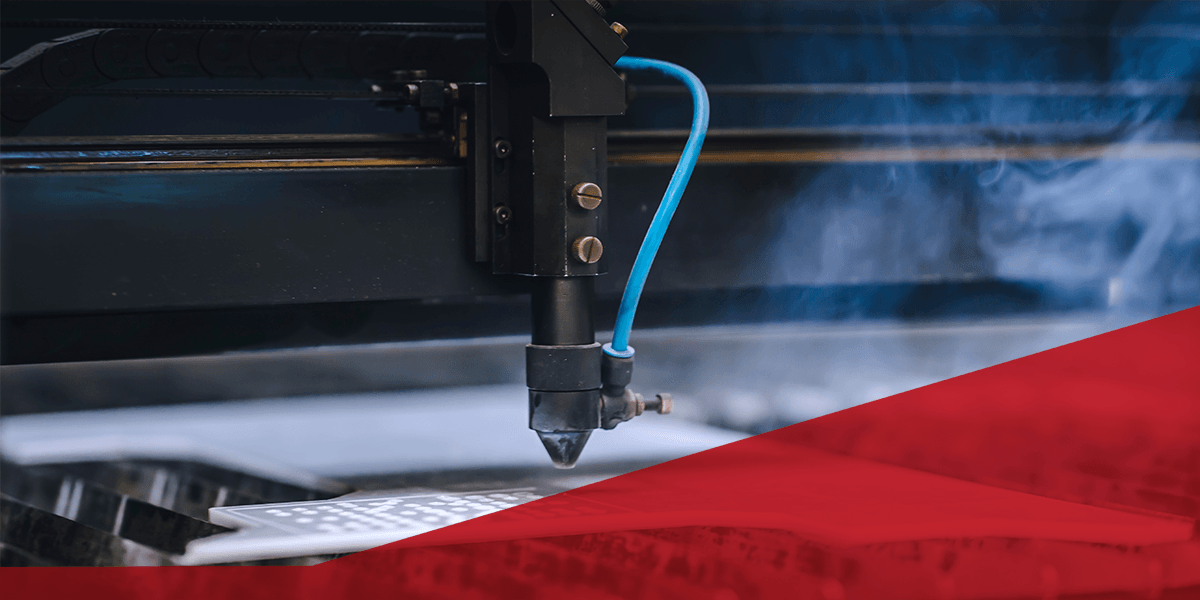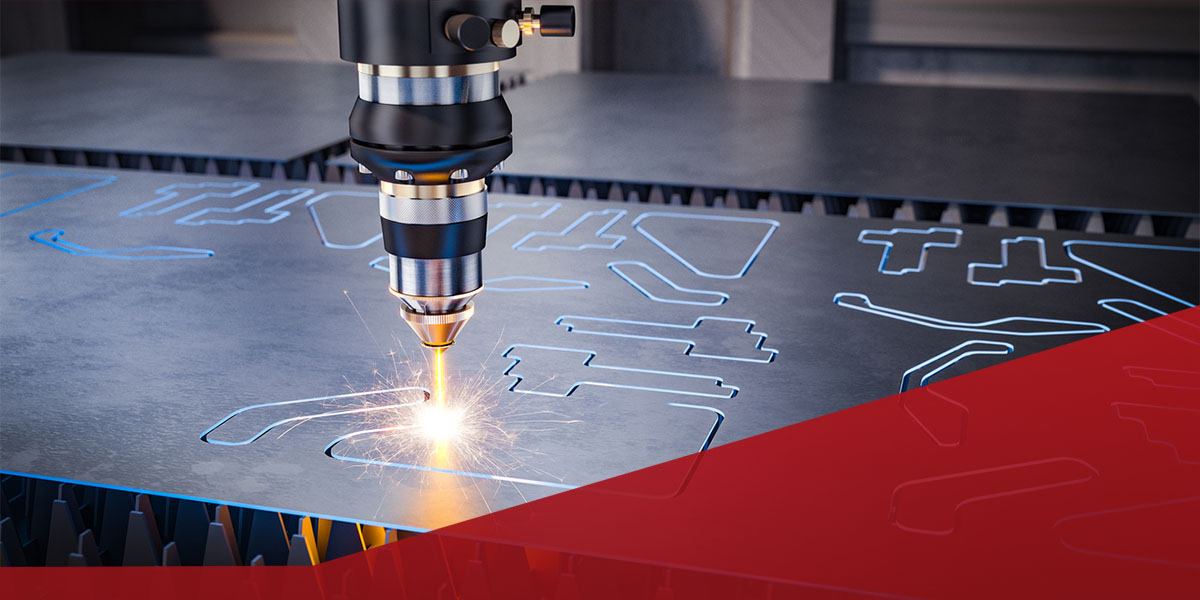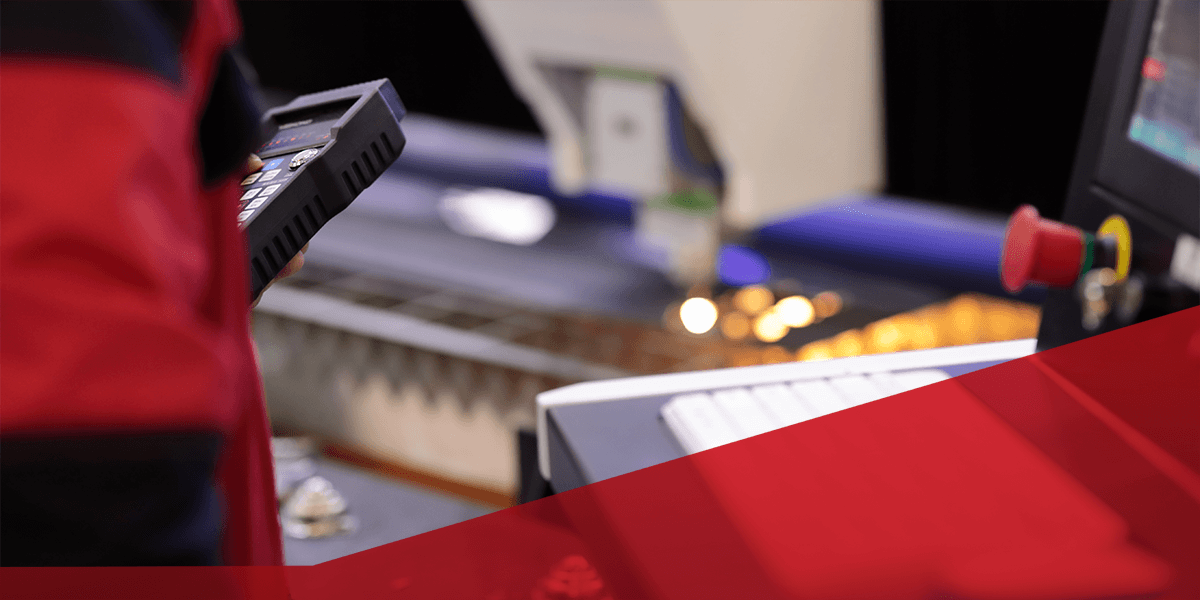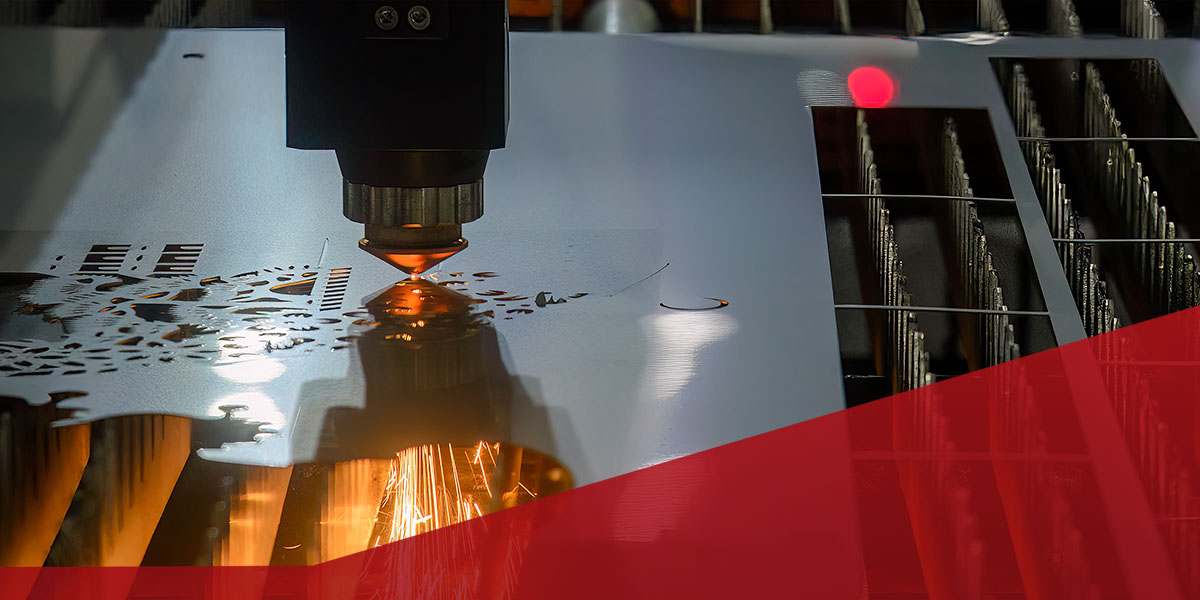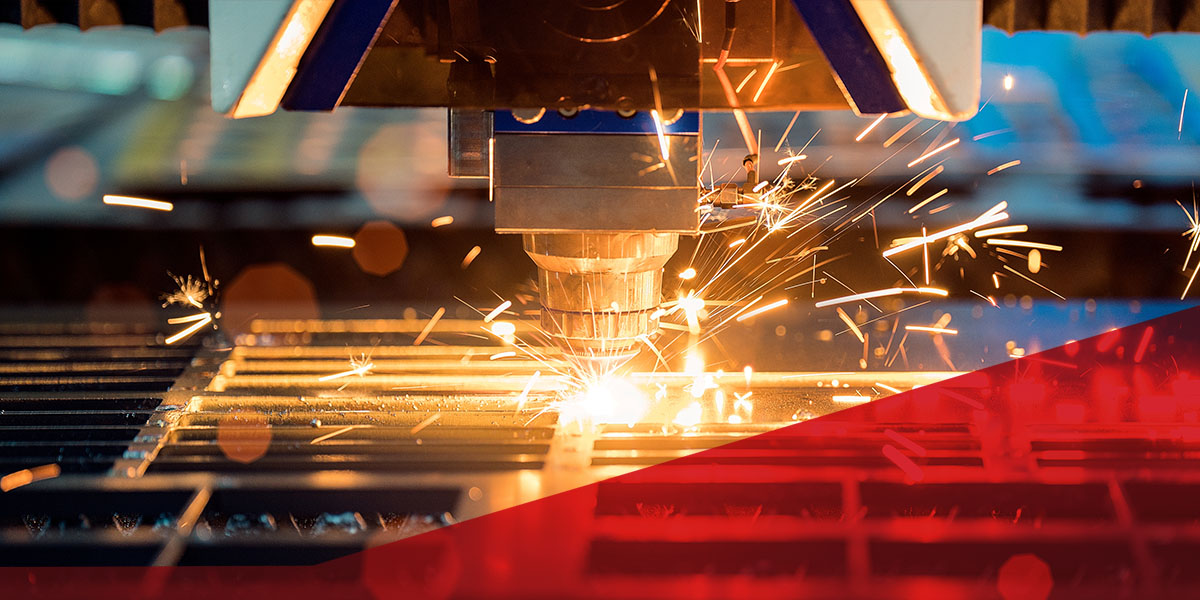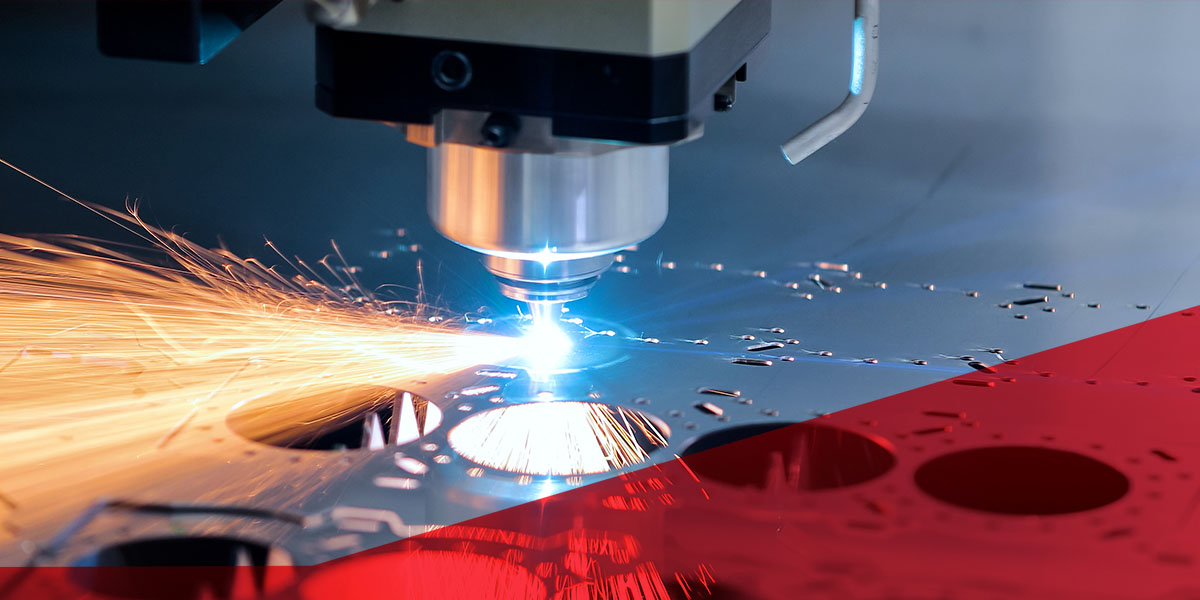8 Common Laser Cutting Machine Failures and How to Fix Them
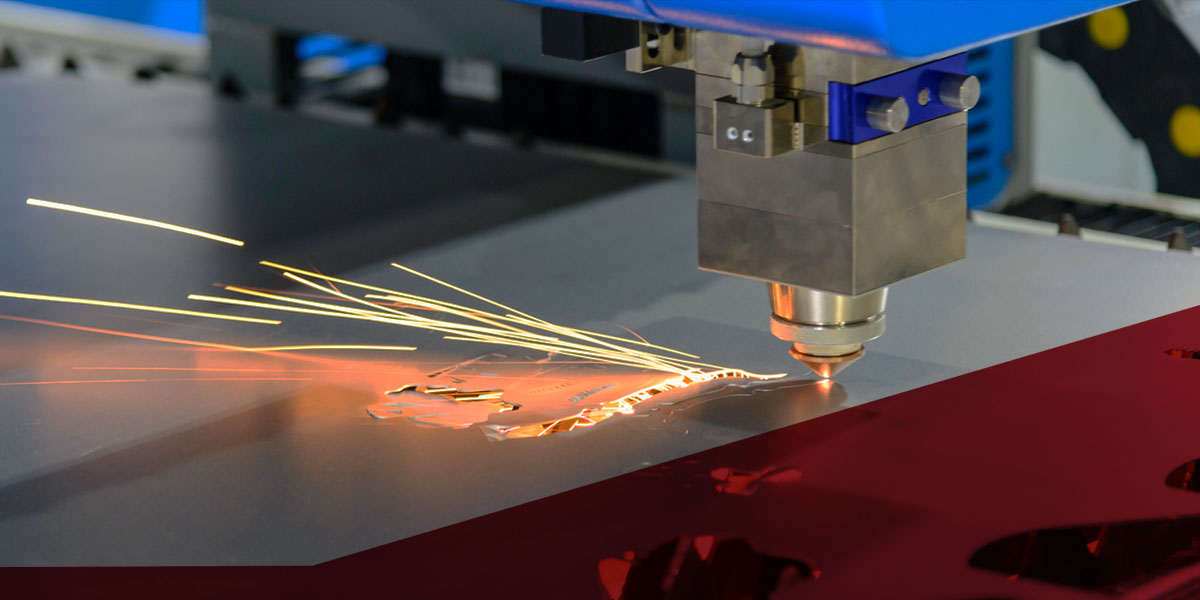
Laser cutting machines play a significant role in modern manufacturing processes. They help us achieve high precision and efficiency while being versatile and applicable to various industries, such as electronics, aerospace and automotive.
However significant they can be, unfortunately, many daily laser cutting machine problems can occur. If you're experiencing any challenges with your machine, we've created this guide to help you.
Below, we explore common laser cutting machine failures and how to fix them.
1. Material Issues
Material issues can lead to different failures impacting the machine's performance. For example, materials like aluminum or copper reflect the laser beam instead of absorbing it. This reflection can ultimately disrupt the cutting process and lead to incomplete or inaccurate cuts.
Other material qualities can also have challenges:
- Thickness: Material thickness can affect the laser's ability to cut through effectively.
- Compatibility: Using materials not suitable for laser cutting can affect the cutting quality.
- Cleanliness: Oily or dirty materials can interfere with the laser beam's path and affect accuracy.
- Handling: Improper material handling can lead to warping or damage during the cutting process.
To address the challenges related to material issues in laser cutting, you can:
- Use materials specifically designed for laser cutting.
- Optimize your laser power and cutting speeds based on the material type and thickness.
- Inspect and clean materials before use to ensure they're free from dirt, oil and other contaminants.
2. Software and Control Systems
Software and control systems play an essential role in ensuring smooth operations. However, if your team finds itself experiencing laser cutting quality issues, it may be because of the following:
- Software glitches are caused by outdated software or bugs disrupting a machine's operation. Ensure the laser cutting software is operating on the latest version.
- Control panel failures, such as unresponsive buttons, system shutdowns or incorrect settings, can affect an operator's ability to work correctly. Inspect control panels routinely for any damage, malfunction or wear.
- Sudden power drops during operation can disrupt the cutting process and lead to incomplete cuts or material damage. Use an uninterruptible power supply (UPS) to provide backup power.
3. Alignment Problems
Misalignments can cause the laser beams to deviate from the intended cutting path, resulting in uneven or irregular cuts. Poor alignment can also lead to inaccuracies in cutting shapes or dimensions, affecting the final product's quality. This can lead to material wastage and impact efficiency.
To overcome alignment challenges, you can:
- Regularly calibrate the laser cutting machine to ensure that the beam is properly aligned.
- Inspect optical components such as mirrors and lenses for misalignment, dirt and damage.
- Train operators on proper alignment techniques.
4. Power Issues
Power issues can play a significant role in affecting laser cutting machinery. When a laser cutting machine experiences power-related challenges, it can lead to various failures on an operational level.
For example, consistent power issues can lead to uneven cuts or incomplete tasks. In addition, it can cause damage to the material being processed. It may also affect the machine's overall stability, impacting the cuts' accuracy and precision.
To fix power-related challenges, you'll need to:
- Ensure the laser cutting machine is connected to a dedicated electrical circuit to avoid power fluctuations.
- Use power monitoring devices to track voltage levels and fluctuations.
If power issues persist, consult with electricians to help you identify any underlying laser defects.
5. Focus and Lens Issues
When the focus or condition of the lenses is compromised, it can significantly impact the cutting precision and quality. Misaligned focus settings can result in the laser beam not being concentrated enough, leading to uneven or inaccurate cuts.
To address focus and lens difficulties, you can:
- Routinely clean the lenses using the appropriate cleaning techniques and tools.
- Ensure that the laser beam is aligned properly with the cutting path and focal point.
- Regularly calibrate the focus settings according to the material being cut and the desired cutting depth.
6. Machine Maintenance Problems

Regular equipment maintenance helps keep it in optimum condition to minimize machine failures and downtime. Neglecting to clean your machine can lead to an accumulation of dust and debris on essential components such as optics and mirrors. This buildup can further obstruct the laser beam's path and affect the cutting precision and quality.
Preventive maintenance is very effective for combating laser cutter problems.
7. Environmental Factors
Changes in temperature, inadequate ventilation or dust accumulation can all impact the performance of laser cutting machines. For example, high temperatures can lead to a component overheating. Your team may experience issues such as inconsistent cutting quality, component damage and misalignments by neglecting to manage some key environmental factors.
To address any of these mentioned environmental challenges, you'll need to:
- Maintain an optimal temperature in the cutting environment by installing heating, ventilation or air conditioning systems.
- Implement a cleaning schedule to remove dust and debris before it gets out of hand.
- Conduct regular inspections to identify potential environmental factors and take immediate action to prevent equipment damage.
8. Operator Errors
When operators lack training or experience, they may cause machine malfunctions. For instance, an operator with insufficient training can incorrectly handle material, leading to cutting issues like misalignments or incomplete cuts. Inexperienced operators may also overlook early signs of malfunctioning and not take the proper preventive steps to protect the machines before too much damage is done.
Proper training, ongoing skills development and safety awareness can help you address challenges related to operator errors.
Preventive Measures
Taking steps to combat laser cutter machine problems is essential for supporting optimal performance and functioning. Explore key ways to prevent errors from occurring.
Operator Training
Proper training equips workers with the knowledge and skills to operate machines efficiently and safely. This can help reduce the risk of errors that could lead to failures.
In addition, educating your operators on machine settings, safety protocols and maintenance procedures can help prevent challenges such as misaligned cuts, component damage and power fluctuations.
Proactive Maintenance
Preventive maintenance involves regularly checking equipment to proactively address potential issues, maintain optimal performance and extend life span. It can play an essential role in a few different ways:
- Early detection: Regular inspections allow you and your team to detect potential issues before they escalate and become significant problems.
- Extend equipment life span: These inspections can help prevent premature wear and breakdowns, extending the machine's longevity
- Optimal performance: Proper maintenance can help ensure that all the components of the laser cutting machine are in good working condition.
Purchase High-Quality Laser Cutting Equipment from Alternative Parts, Inc.
Using laser cutting equipment can present many challenges. However, proactiveness and adherence to best practices are just a few basic yet effective ways to ensure optimal performance and longevity for your laser-cutting machines.
API is dedicated to offering quality parts, maintenance and repair services for your machinery at competitive prices. We offer industry-leading brands for all your equipment needs.
Contact us today to learn how we can help you overcome possible laser cutting machine failures and create a safe and efficient operation.



